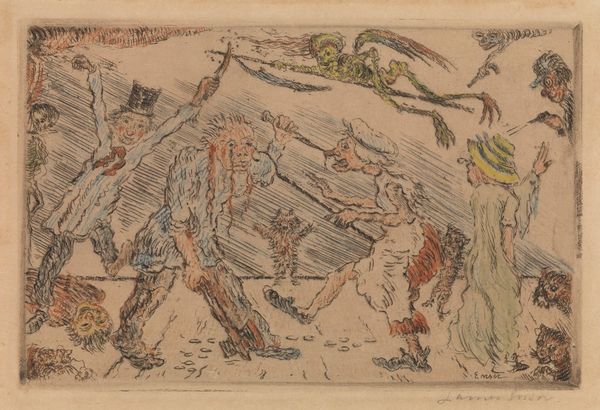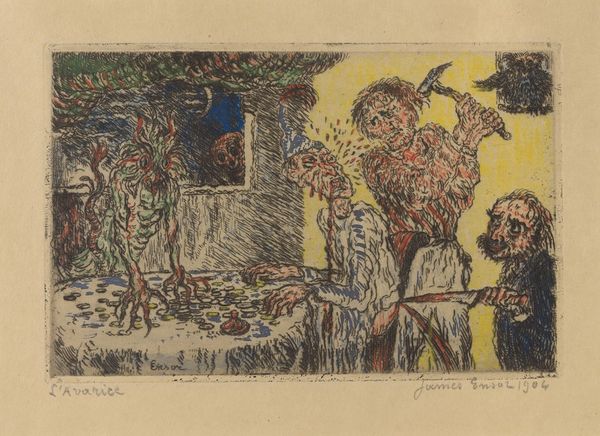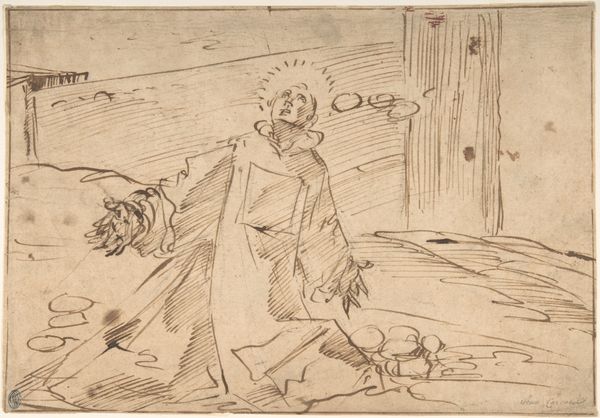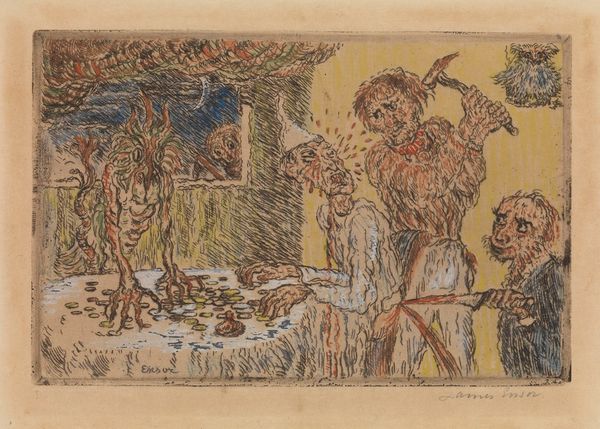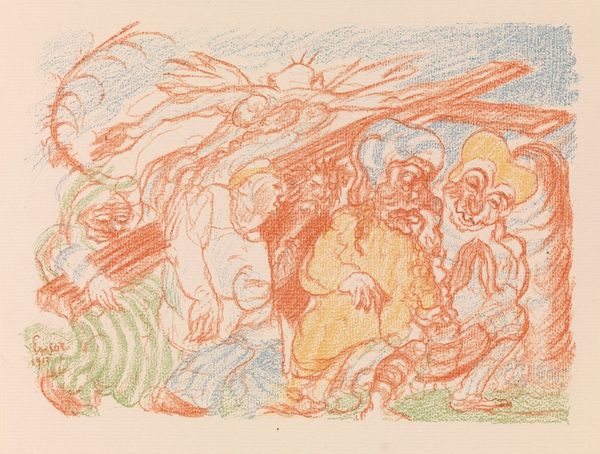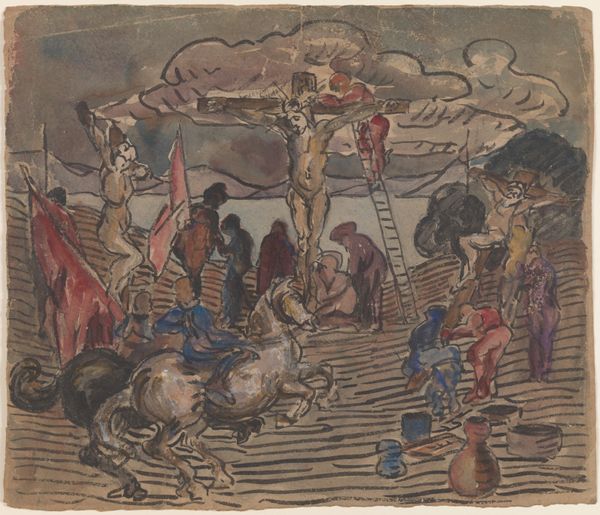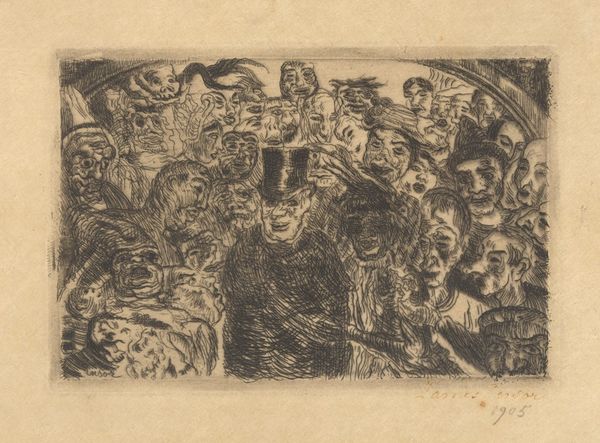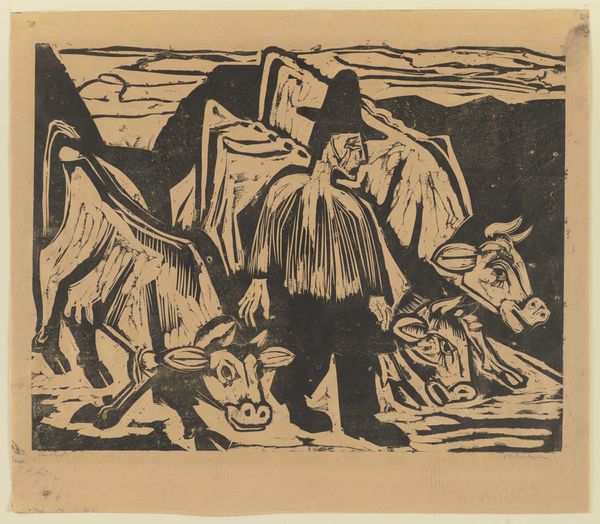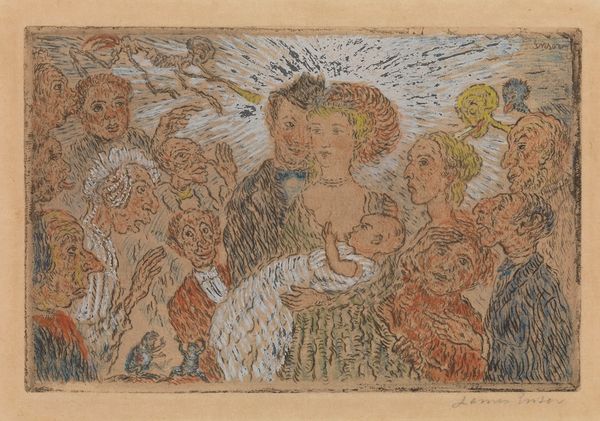
print, etching, impasto
#
narrative-art
# print
#
etching
#
caricature
#
figuration
#
impasto
#
expressionism
#
symbolism
#
grotesque
Copyright: Public Domain: Artvee
Editor: This is James Ensor’s etching from 1904, called *De gramschap*, or *The Anger*. The chaotic scene, full of distorted figures and grotesque masks, feels like a disturbing carnival. I’m really struck by how strange and unsettling it is. What do you see in this piece? Curator: It's fascinating how Ensor taps into the primal energy of anger, isn't it? Think about the recurring motifs of masks and skeletons, the sharp, almost violent lines of the etching. What could those represent in our shared cultural memory? Editor: I suppose masks could hide true feelings, while skeletons… maybe the universality of death, how anger strips us down to our most basic selves? Curator: Precisely. And notice the colors - lurid greens, sickly yellows, clashing against the harsher blacks and whites. Colors aren't just decoration; they evoke emotions and tap into archetypal symbolism. Editor: I do see that the use of color heightens the emotional impact of the figures’ expressions and interactions. Do you think Ensor intended to critique something specific about society with this symbolism? Curator: His symbols often critique the absurdities of social conventions and the masks people wear. Ensor reveals the ugliness beneath polite society. The flying figures are rather frightening and reminiscent of medieval allegories. This artwork feels so contemporary, in a way, how might that be? Editor: I see how the themes are relatable today, revealing hypocrisy in modern life through symbolism and caricature. This piece is really disturbing and insightful. I had no idea that such old work could hold so much modern truth. Curator: Indeed. Art allows us to see reflections of ourselves throughout time. It presents cultural memory.
Comments
No comments
Be the first to comment and join the conversation on the ultimate creative platform.
